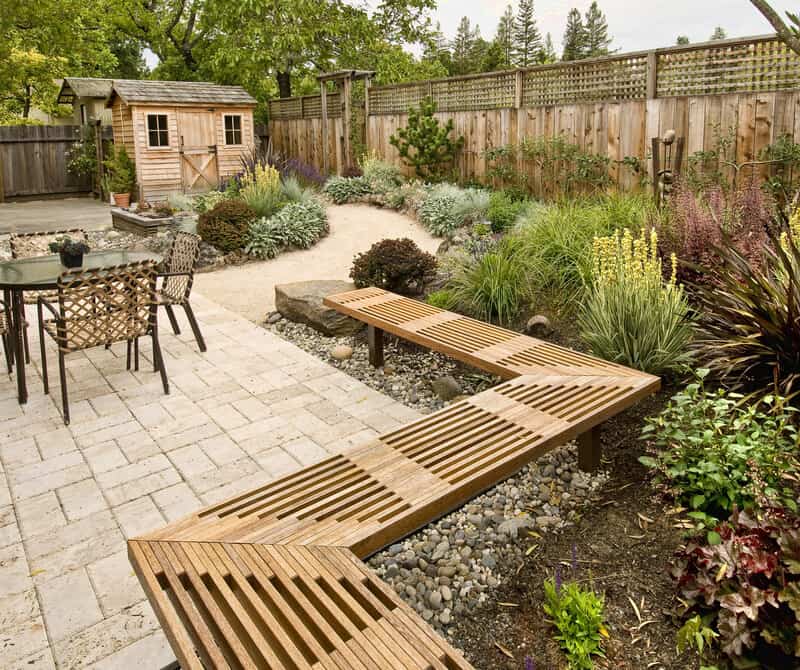CA Contractors #344056

Small backyards are common here in the Bay Area where space is at a premium and larger, older lots have been subdivided multiple times over. The good news is that a handful of landscaping tricks are all you need to give the impression that your smaller patio or yard space is larger than it actually is.
When linear pavers or plank-style decking material are set on the diagonal, it offers the illusion of length, even in a shorter space. If there is room, you can also create a curving or winding pathway – which tells the brain there is a “pathway,” – an automatic symbol of distance or space to be travailed.
By planting brighter, flowers and flowering shrubs in the entry area of your yard or patio, the eye is drawn there. Then, the rest of the muted-hued area of the yard fades away from the eye, making it more form- or boundary-less. Using tropical plants with larger leaves at the foreground, and shrubs with smaller leaves at the edges of the yard also help.
The ability to grow fruit trees is automatically associated with large yards or acreage properties. In fact, you can grow fruit trees exceptionally small spaces using a technique called espaliering. This very special method includes pruning trees to grow out along flat surfaces – such as a fence or wall. It utilizes the same properties used by vineyard owners who train grapevines to grow in even, horizontal spaces.
In addition to enjoying your own fruit trees in a small backyard, espaliering can also enhance crop yields because fruit trees benefit from higher temperatures along sun-warmed walls – which can extend their growing season, as well as extra sun for their leaves, translating to larger quantities of sweet, ripened fruit. Talk to your landscape or gardening professional about growing espaliered fruit trees in your backyard, or read, How to Espalier: Fruit Trees in Small Spaces to try it on your own.
Just as a loft room can make a small bedroom or living room feel bigger, creating different levels of the yard opens up different air space. For example, consider digging down a bit from your entry patio, enough that you can install two or three steps down into a separate area – perhaps for a fire pit or separate seating area. Terracing also provides more room for planter space or for walls to add benched seating.
Install a large, dramatic focal point on one side of the area (a beautiful water feature, mural, work of weather-proof art, etc.) and utilize a seating area in front of it – complete with at least two chairs and a small table. Now, people seated there have a specific focus for their gaze. In the meantime, you can set up a separate area right behind that area, facing the other way, making your one small yard seem like two separate but integrated spaces.
Outdoor landscapes typically feature a set number of elements:
That can seem a bit overwhelming when you have a small yard space, but in fact – it’s all in the arranging. By keeping your plantscapes to the perimeter of the area, you optimize the space in the middle. Espaliered trees are one example of this, as are elevated perimeter planters with built-in bench seating in front of them.
Drawing the eye upward, adding length, is equally as beneficial as setting flooring lengthwise or on the diagonal, as mentioned above. Consider adding a tall, arched trellis at the entrance, and tall, vertical trellis “walls” with climbing, flowering plants.
Are you looking for ways to create a beautiful outdoor design that makes your small backyard seem bigger, while also accommodating a comfortable outdoor space? Contact the Bay Area Landscape team to get started.